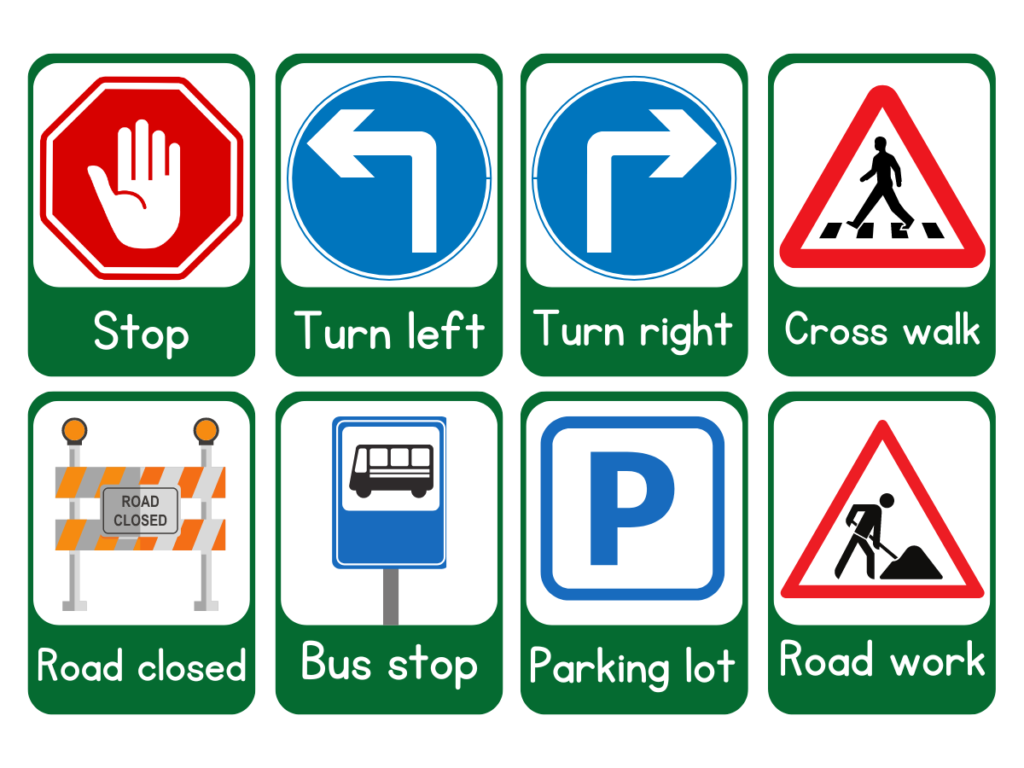Learn the meanings of common traffic signs with our comprehensive guide. Stay informed and drive safely with expert tips from King Driving School.
Importance of Knowing Traffic Signs and Their Meanings
Why Familiarity with Traffic Signs Matters:
Traffic signs play a crucial role in ensuring road safety and orderly traffic flow. Understanding their meanings is essential for all drivers, as they provide vital information and instructions that help prevent accidents and keep everyone on the road safe.

Different Categories of Traffic Signs
Regulatory Signs:
Regulatory signs are signs with red, white, or black colors that convey laws and regulations that drivers must obey. Common examples include stop signs, yield signs, and speed limit signs.
Warning Signs:
Warning signs have a yellow background and alert drivers about potential hazards, such as sharp curves, pedestrian crossings, or animal crossings ahead. Understanding these signs prepares drivers to take necessary precautions.
Guide Signs:
Guide signs have green backgrounds and provide information about destinations, directions, and distances. They help drivers navigate and plan their routes efficiently.
Informational Signs:
Informational signs have blue backgrounds and offer essential information, such as rest area locations, emergency services, or points of interest for drivers.
Understanding the Most Common Traffic Signs
Stop Sign:
The red octagonal stop sign requires drivers to come to a complete stop at intersections and yield the right-of-way to other vehicles and pedestrians.
Speed Limit Sign:
Speed limit signs indicate the maximum speed allowed on a specific road. Adhering to speed limits is crucial for safety and avoiding traffic violations.
Yield Sign:
Yield signs are triangular and require drivers to slow down and yield the right-of-way to other vehicles or pedestrians.
No Entry Sign:
The circular red and white “No Entry” sign indicates that drivers are not allowed to enter a particular road or area.
School Zone Sign:
The fluorescent yellow-green school zone sign warns drivers that they are approaching a school area and should exercise extra caution.
Pedestrian Crossing Sign:
The pedestrian crossing sign alerts drivers to the presence of a crosswalk and reminds them to watch for pedestrians.
One Way Sign:
The one-way sign indicates that traffic on a particular road can only flow in one direction.
How to Learn and Retain Traffic Sign Meanings
Study the Driver’s Manual:
Review your driver’s manual, which contains information about traffic signs and their meanings. Focus on understanding different sign categories and their implications.
Take Practice Tests:
Online practice tests can help you familiarize yourself with various traffic signs and assess your knowledge.
Observe While Driving:
Pay attention to traffic signs while driving, and make a mental note of their meanings to reinforce your understanding.
Conclusion
Understanding common traffic signs and their meanings is a vital aspect of safe and responsible driving. By learning and retaining these signs, you’ll stay informed on the road and contribute to a safer driving environment for all. Drive confidently and responsibly with the knowledge gained from King Driving School’s comprehensive guide to traffic signs.


